Wimbledon Common Weekend of Nature
Sunday 18th June 2023
Quekett members participated in the ninth Weekend of Nature (formerly called a BioBlitz) on Wimbledon Common (a Site of Special Scientific Interest (SSSI) and a Special Area of Conservation (SAC)) in south-west London as part of the Club’s microscopy outreach programme.
Alan Wood, Neil Henry and Paul Smith set up their microscopes, cameras and computers in the open-fronted garage next to the Information Centre to assist with identifying plants, insects and other organisms found during the organised walks. This venue makes our presence more obvious to visitors than the Information Centre, and we had lots of interest from children and their parents.
Paul Smith brought a small digital microscope that has a built-in screen, a small Philip Harris stereomicroscope, and a Swift M1000-D trinocular compound microscope (with an eyepiece camera sending images to a laptop computer). He ran all of his equipment from power packs, not from the mains. In addition to specimens from the nearby cattle trough, Paul showed various seeds (held in coin capsules), insects mounted in resin blocks and slides of pollen. He also brought some free leaflets on using microscopes and observing pond life and other specimens (all available as PDFs from our Downloads page).
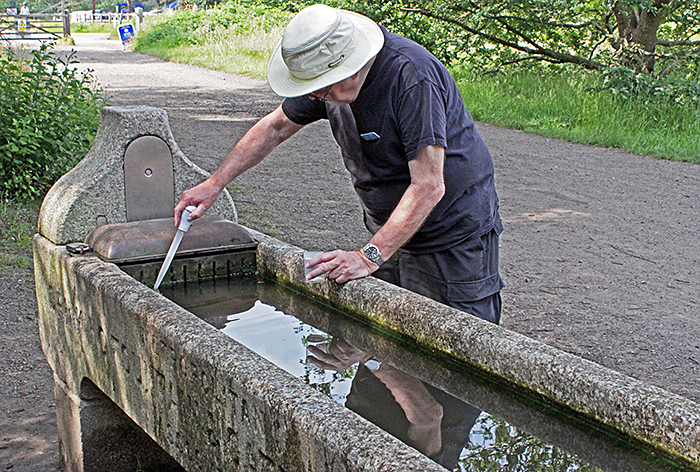 Paul Smith collecting from the cattle trough
Paul Smith collecting from the cattle trough
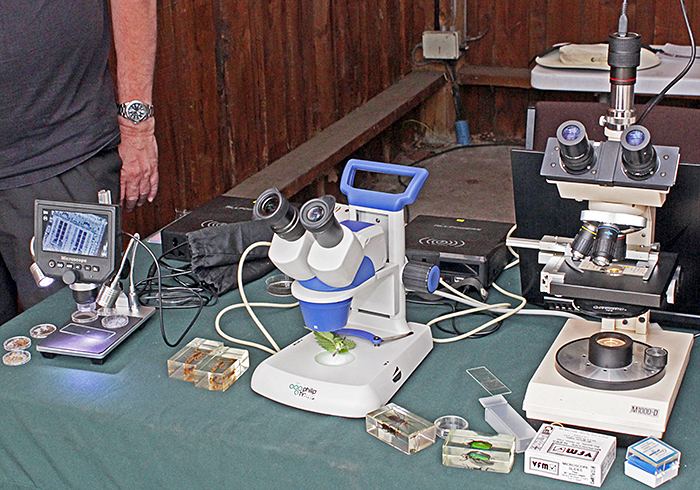 Paul Smith’s microscopes
Paul Smith’s microscopes
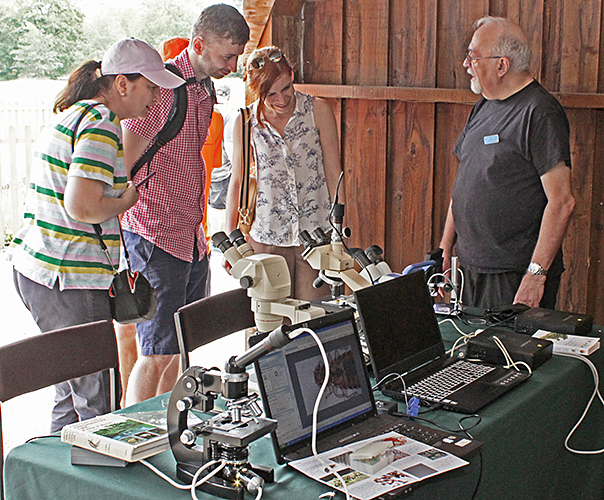 Paul Smith with visitors
Paul Smith with visitors
Neil Henry brought his monocular PZO compound microscope with an eyepiece camera sending images to ToupView software on his laptop computer. In the sample from the cattle trough, Neil found a large ostracod, several copepods and Daphnia, one nematode and one Tubifex worm. Neil also brought a copy of Collins Field Guide to Freshwater Life by R. Fitter & R. Manuel (the 1986 edition, very popular with Quekett members) to help identify freshwater specimens.
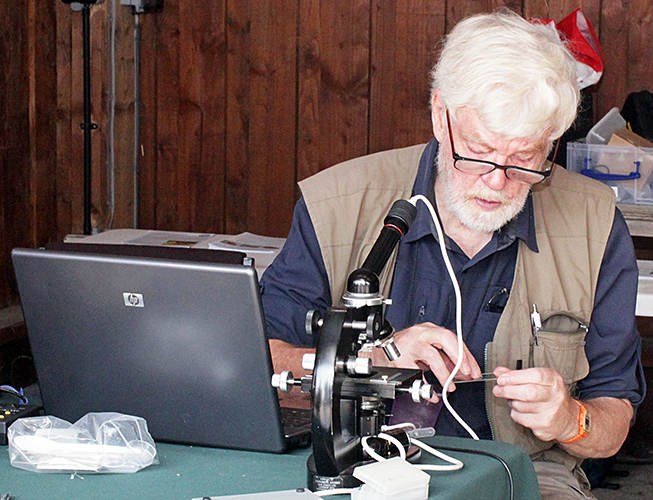 Neil Henry
Neil Henry
Alan Wood brought his Olympus SZ4045 stereomicroscope with an LED ring-light, and used it to show specimens including small moths, stinging-nettle hairs, spines on bramble leaves, dandelion seed heads and various grasses.
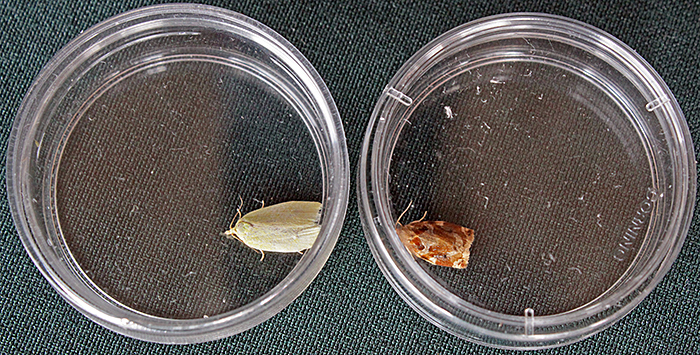 Small moths from light-trap (Petri dish 38 mm diameter)
Small moths from light-trap (Petri dish 38 mm diameter)
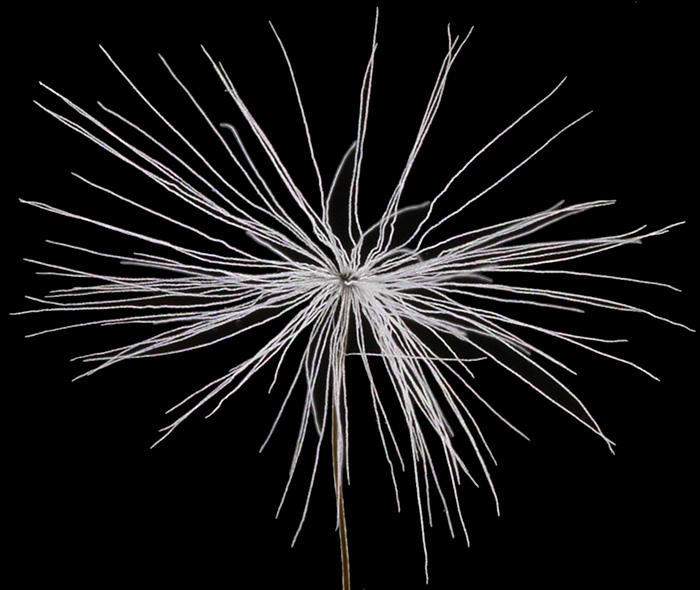 Dandelion seed
Dandelion seed
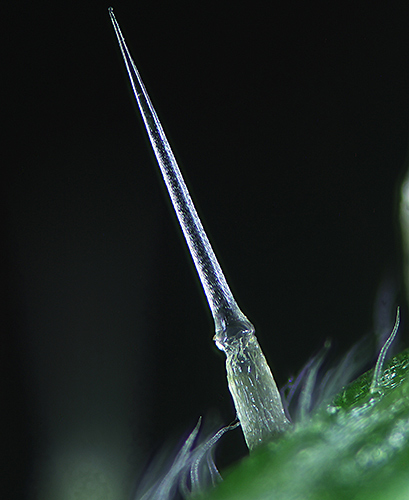 Stinging-nettle hair
Stinging-nettle hair
We shared the garage with the moth trap and with the Wimbledon and Putney Commons Conservators, who had a display about their activities and the Common.
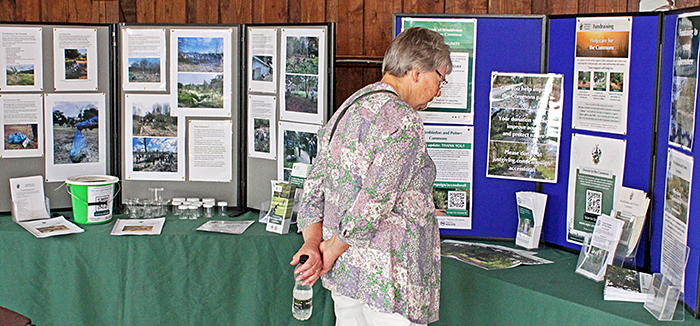 Wimbledon and Putney Commons Conservators display
Wimbledon and Putney Commons Conservators display
Just outside the garage, the Royal Society for the Protection of Birds and Reptile Events had stands.
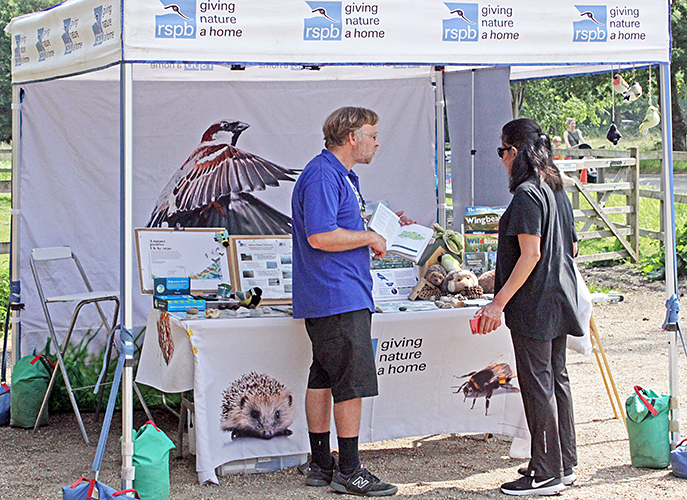 Royal Society for the Protection of Birds stand
Royal Society for the Protection of Birds stand
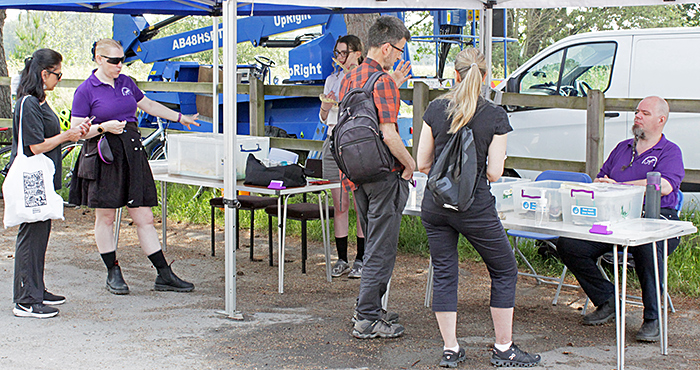 Reptile Events stand
Reptile Events stand
Opening the moth trap
Les Evans-Hill ran a moth trap near the Common on the night of Saturday 17th and opened it in the garage on Sunday 18th. He slowly removed the cardboard egg trays that give the moths somewhere to cling to, and told us the names of many of them. The largest was a lime hawk-moth (Mimas tiliae).
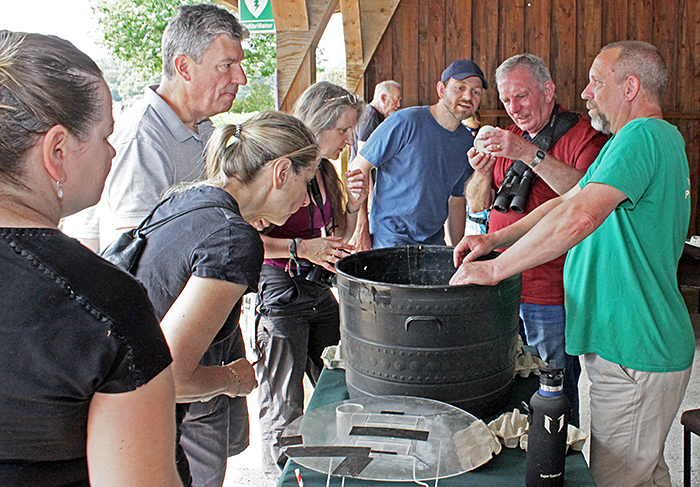 Opening the moth trap (Les Evans-Hill on right)
Opening the moth trap (Les Evans-Hill on right)
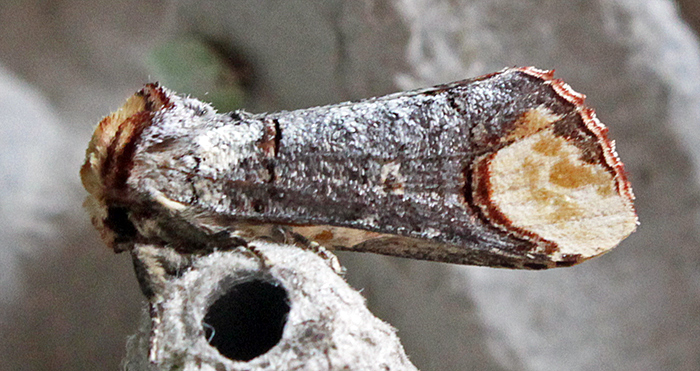 Buff-tip moth (Phalera bucephala)
Buff-tip moth (Phalera bucephala)
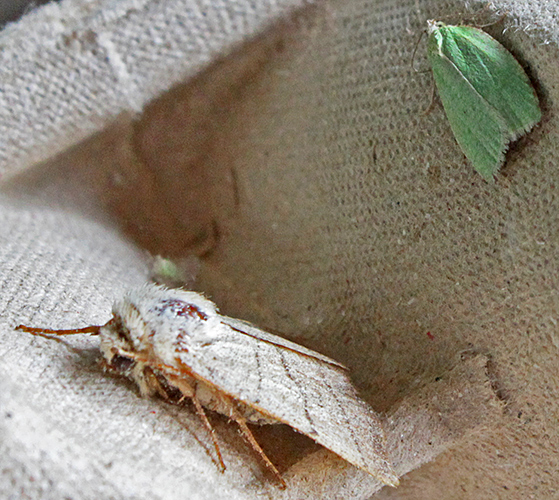 Moths from trap (green oak tortrix top right)
Moths from trap (green oak tortrix top right)
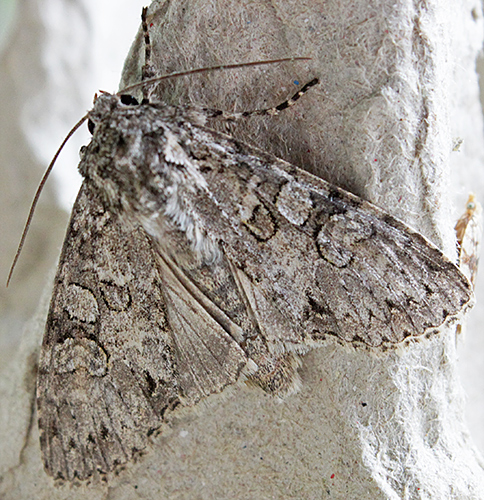 Moth from trap
Moth from trap
All of the moths were released.
Butterfly and Dragonfly Walk
The Butterfly and Dragonfly Walk on Saturday 17th was led by Les Evans-Hill, Simon Riley and Angela Evans-Hill, who were happy to point out interesting specimens and identify them.
We didn’t have to go far to see our first dragonflies; there is a newly-constructed wildlife garden next to the Rangers Office, with a pond, and dragonflies and damselflies have already found it.
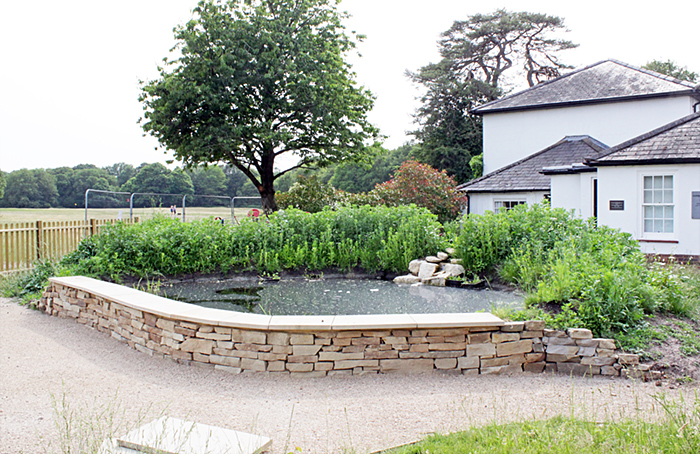 Wildlife garden
Wildlife garden
The walk took us across the plain, through the woods to Bluegates gravel pit, on to Hookhamslade pond, and finally to Queensmere. There were plenty of stops to catch, examine, identify and photograph all sorts of plants and animals.
We didn’t see as many butterflies as we expected, but we saw lots of dragonflies and damselflies. Walking through the grass on the plain, we disturbed hundreds of small grasshoppers. On the bramble flowers, there were several honeybees, bumblebees, hoverflies and other flies. Around Hookhamslade pond, we saw sawfly larvae devouring the leaves of yellow iris, and several small frogs.
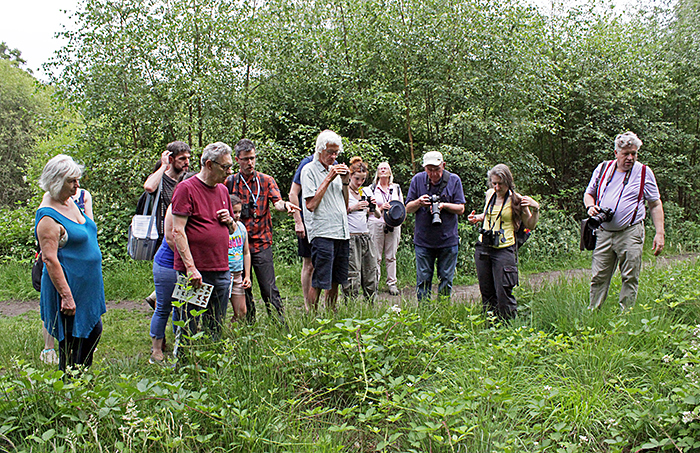 Brambles
Brambles
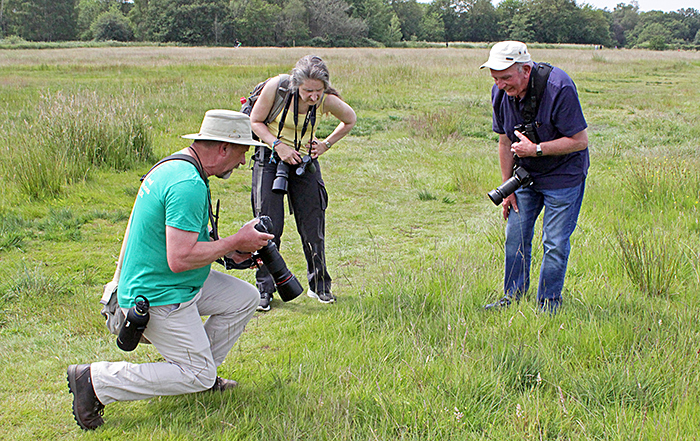 Photographing specimens on the plain
Photographing specimens on the plain
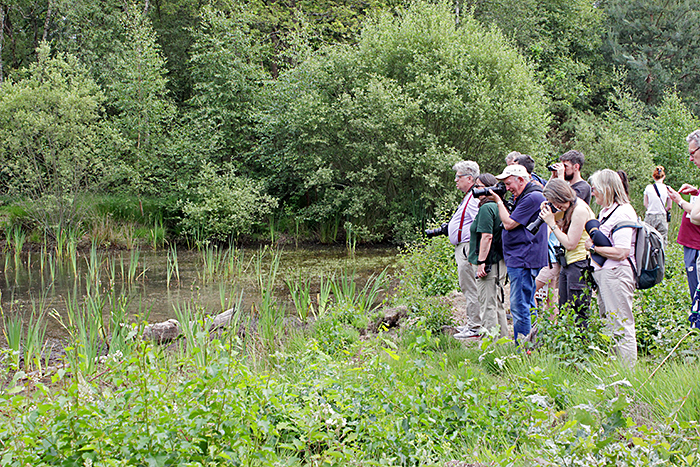 Bluegate gravel pit
Bluegate gravel pit
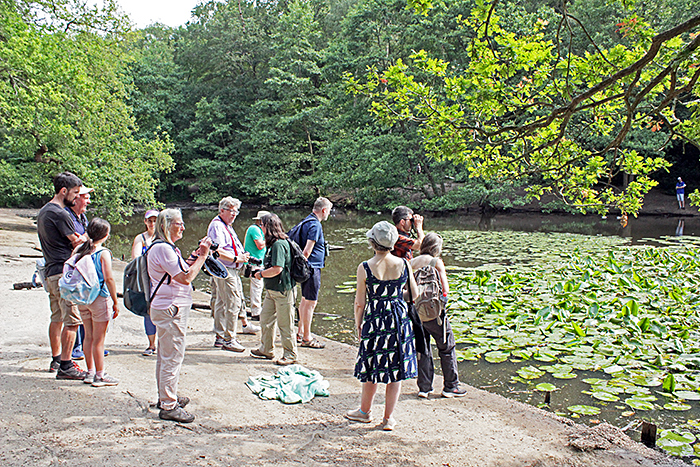 Queensmere
Queensmere
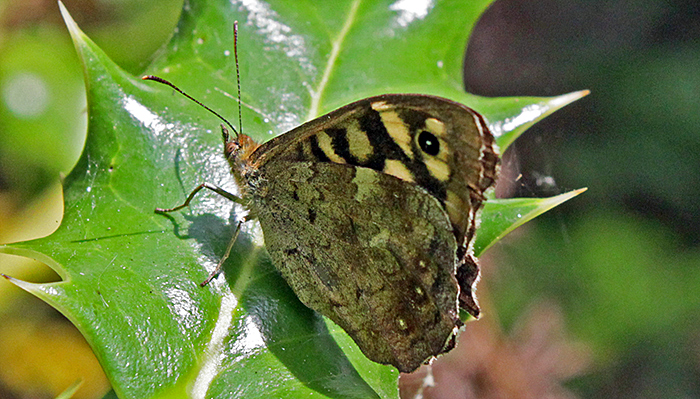 Speckled wood butterfly (Pararge aegeria) on holly leaf
Speckled wood butterfly (Pararge aegeria) on holly leaf
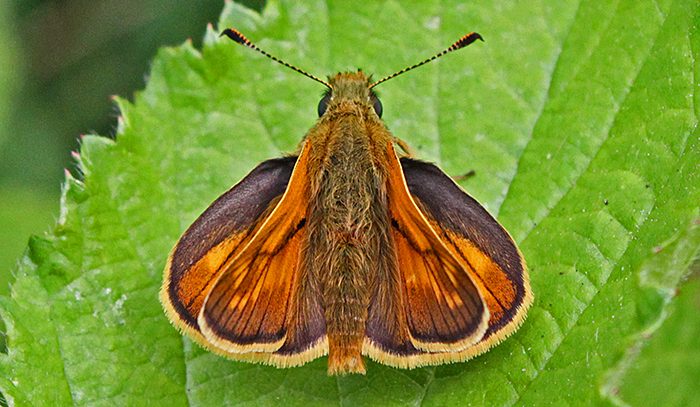 Large skipper butterfly (Ochlodes sylvanus)
Large skipper butterfly (Ochlodes sylvanus)
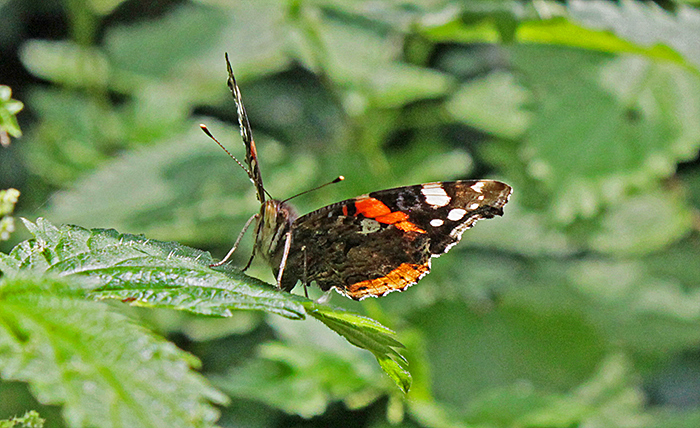 Red admiral butterfly (Vanessa atalanta)
Red admiral butterfly (Vanessa atalanta)
Caterpillars of the green oak tortrix (Tortrix viridana) do a lot of damage to the leaves of oak trees, but it does not seem to have much effect on the trees and they grow new leaves.
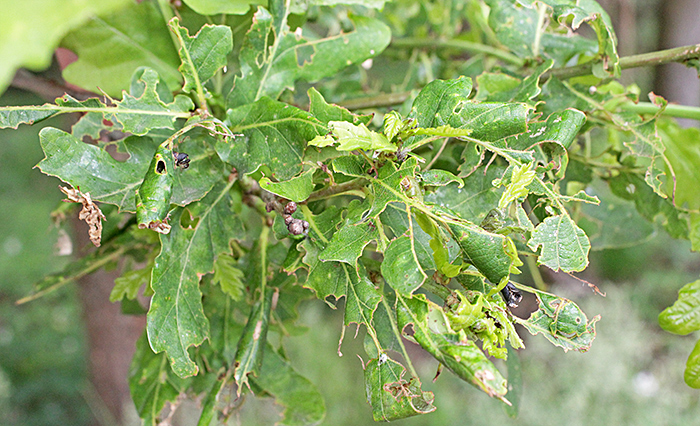 Oak leaves damaged by green oak tortrix
Oak leaves damaged by green oak tortrix
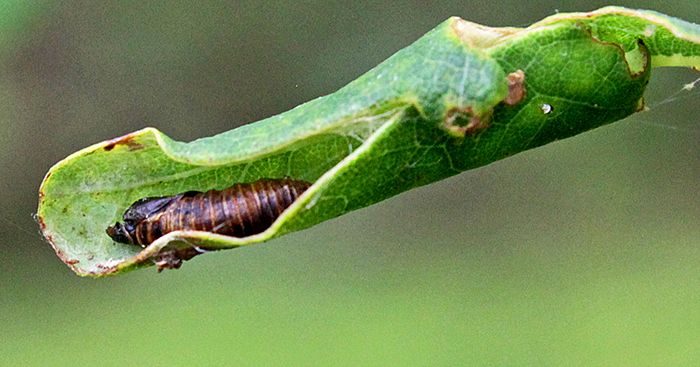 Pupa of green oak tortrix moth
Pupa of green oak tortrix moth
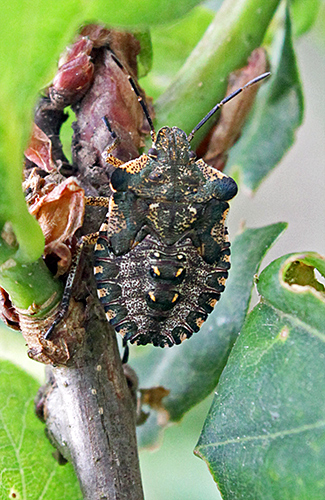 Shield bug on oak
Shield bug on oak
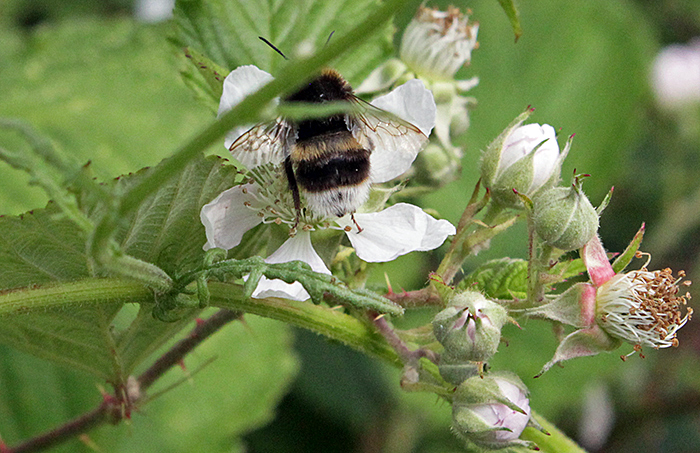 Bumblebee on bramble flowers
Bumblebee on bramble flowers
We usually see a few solitary poplar leaf beetles (Chrysomela populi) on small trees, but this year they were present in large numbers and causing significant damage.
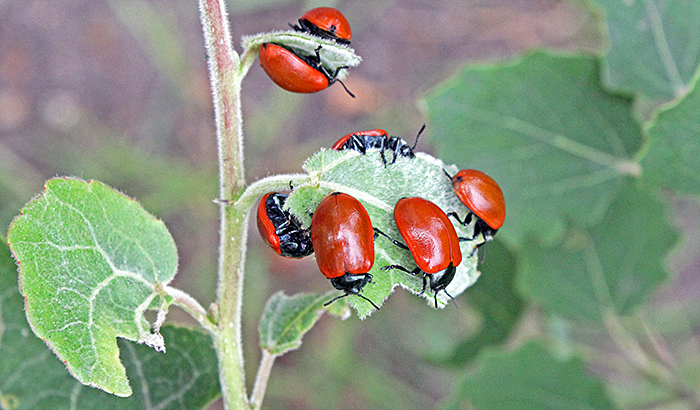 Poplar leaf beetles
Poplar leaf beetles
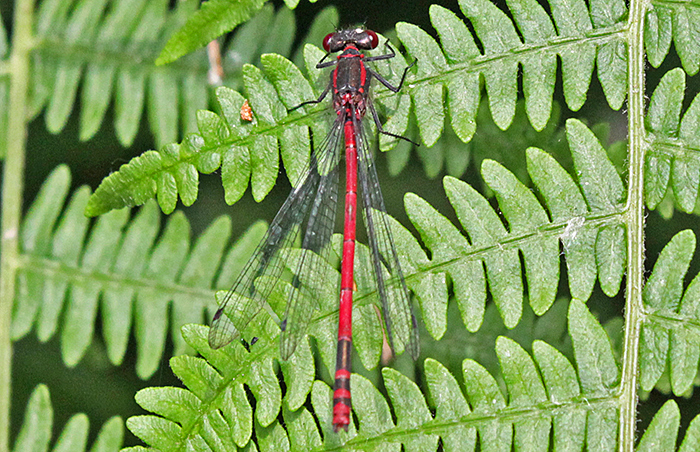 Large red damselfly (Pyrrhosoma nymphula)
Large red damselfly (Pyrrhosoma nymphula)
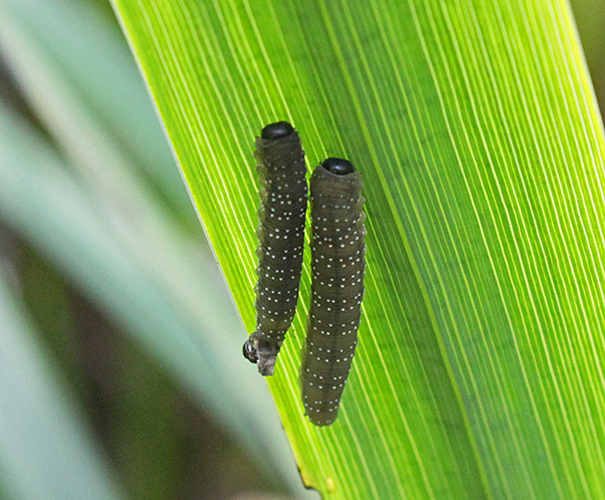 Larvae of iris sawfly (Rhadinoceraea micans)
Larvae of iris sawfly (Rhadinoceraea micans)
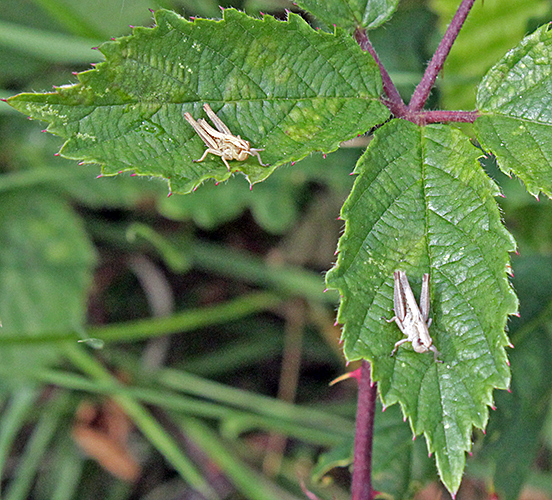 Small grasshoppers
Small grasshoppers
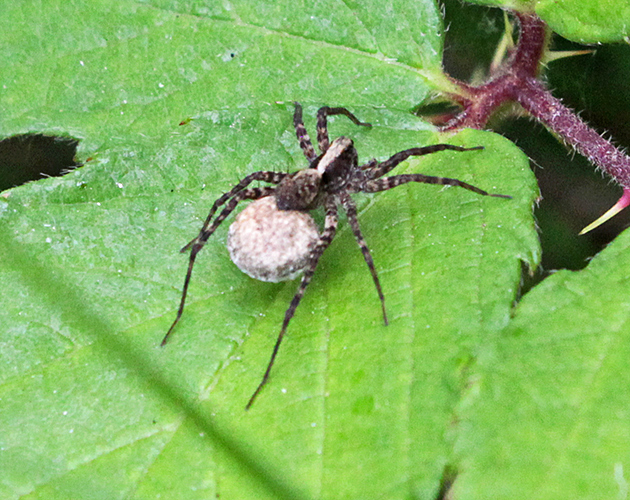 Wolf spider (Lycosidae) with circular egg sac
Wolf spider (Lycosidae) with circular egg sac
General Nature Walk
The General Nature Walk on Sunday 18th was led by Henry Wilson, Les Evans-Hill, Simon Riley, Ros Taylor and Peter Haldane, who were happy to point out interesting specimens and identify them. We were provided with nets, small plastic jars and a page of photos of plants and animals that we might see. As we walked around, Peter explained how the Common is managed to maintain biodiversity and to keep it safe for visitors.
The walk took us across the plain, through the woods and heathland to Hookhamslade pond, and back through woodland and across the plain.
Yellow rattle is a recent accidental introduction to the Common. It is a parasite on grasses and is now widespread on the plain, but by thinning the grass it allows more wild flowers to grow.
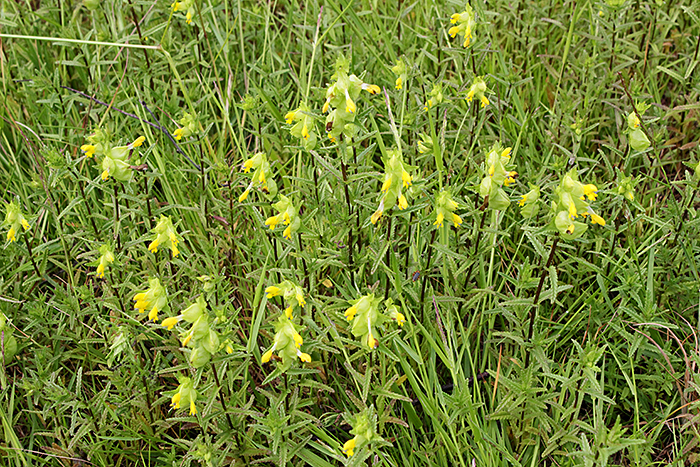 Yellow rattle (Rhinanthus minor)
Yellow rattle (Rhinanthus minor)
Bird’s-foot trefoil gets its common name from the seed pods, which resemble the feet of a bird.
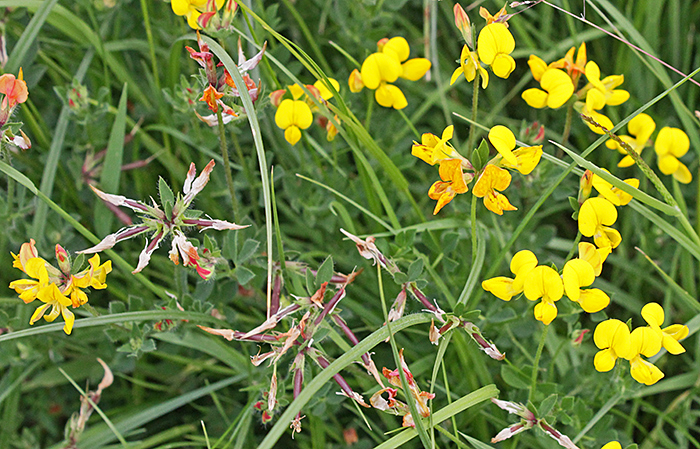 Flowers and seed pods of bird’s-foot trefoil (Lotus corniculatus)
Flowers and seed pods of bird’s-foot trefoil (Lotus corniculatus)
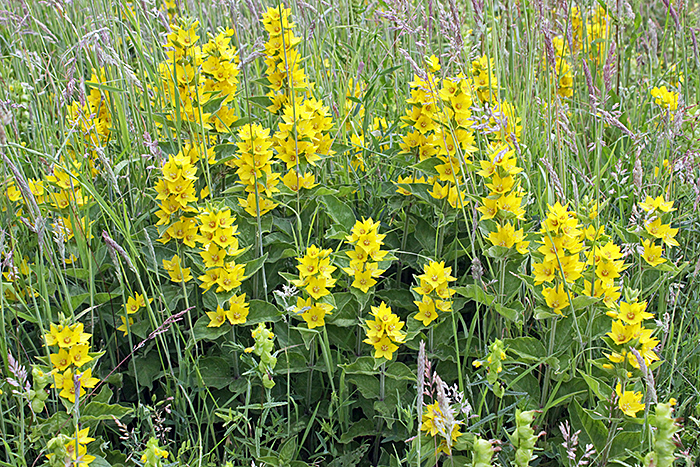 Yellow loosestrife (Lysimachia vulgaris)
Yellow loosestrife (Lysimachia vulgaris)
We saw lots of poplar leaf beetles (Chrysomela populi), causing significant damage to young trees.
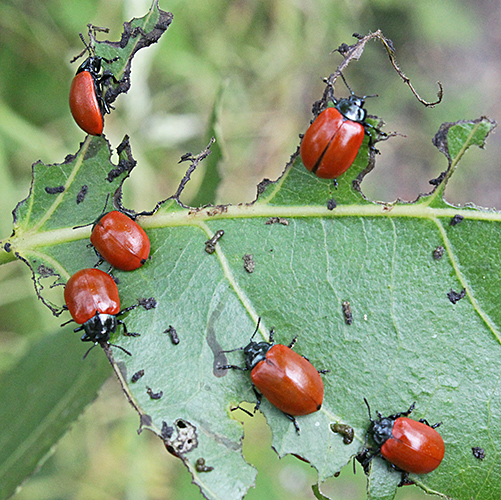 Poplar leaf beetles
Poplar leaf beetles
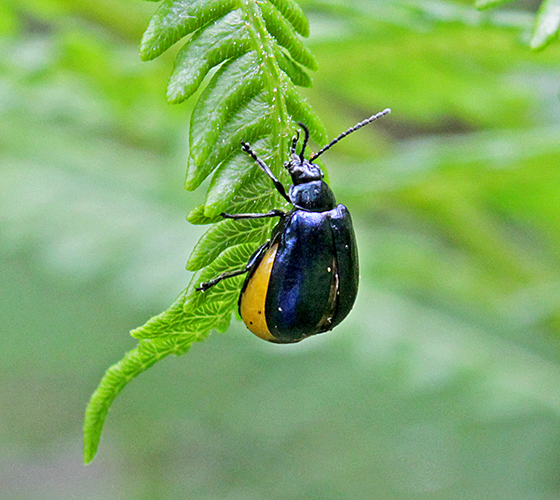 Alder leaf beetle (Agelastica alni) on bracken frond
Alder leaf beetle (Agelastica alni) on bracken frond
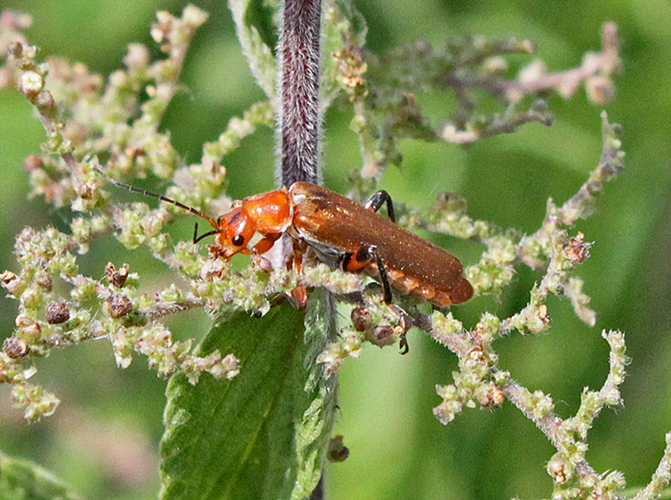 Soldier beetle (Cantharidae) on stinging nettle
Soldier beetle (Cantharidae) on stinging nettle
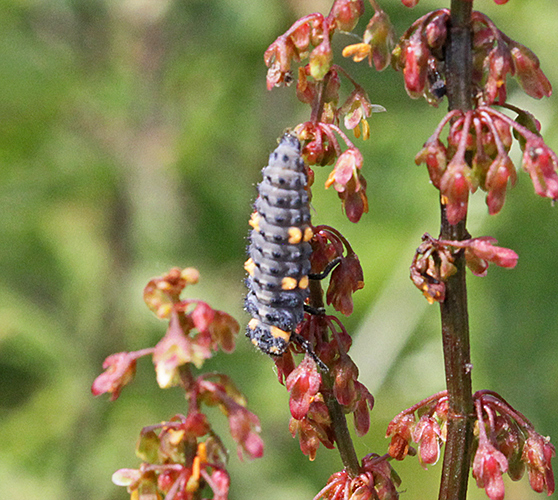 Ladybird larva on dock flowers
Ladybird larva on dock flowers
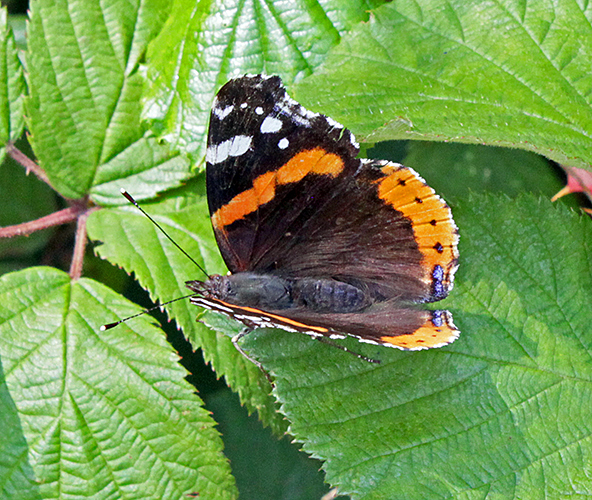 Red admiral butterfly (Vanessa atalanta) on bramble leaf
Red admiral butterfly (Vanessa atalanta) on bramble leaf
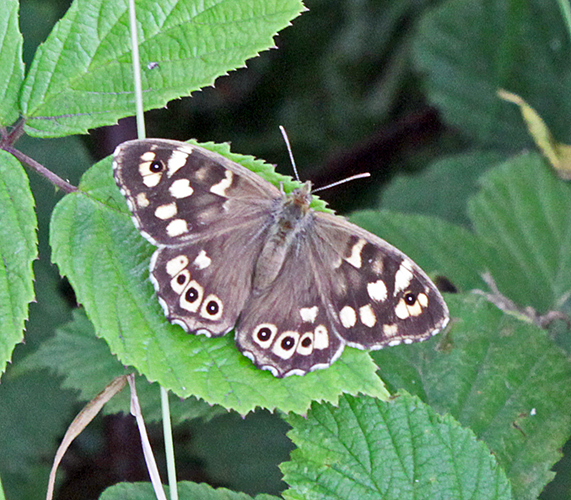 Speckled wood butterfly (Pararge aegeria) on bramble leaf
Speckled wood butterfly (Pararge aegeria) on bramble leaf
One of the essential tasks in maintaining the biodiversity of the Common is scrub bashing. Trees are constantly invading the grassland and heath, and have to be cut down before they get too big, a process known as scrub bashing. We stopped to collect specimens near a large pile of scrub that had been cut the previous week.
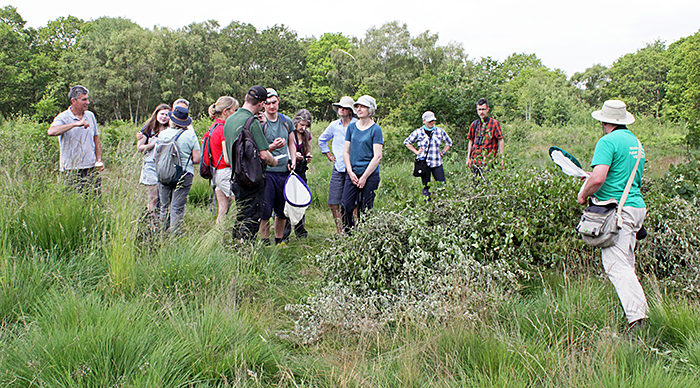 Scrub bashing
Scrub bashing
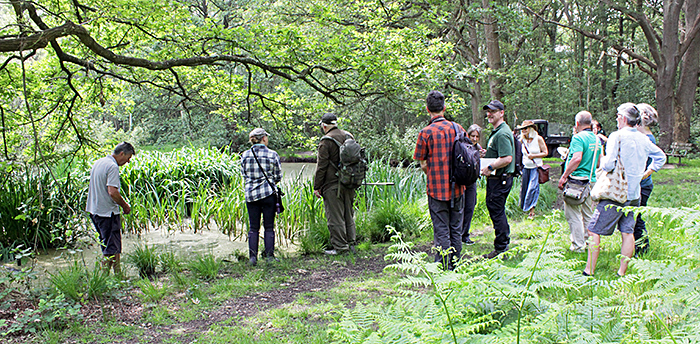 Group at Hookhamslade pond
Group at Hookhamslade pond
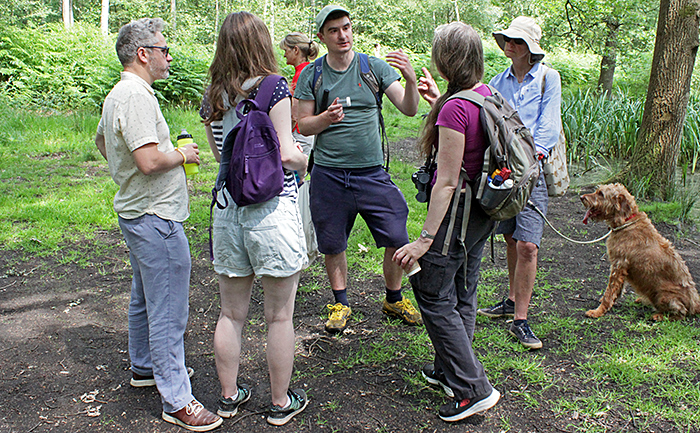 Henry Wilson (centre)
Henry Wilson (centre)
Dr Naomi Ewald came with us on the walk, and collected specimens from Hookhamslade pond.
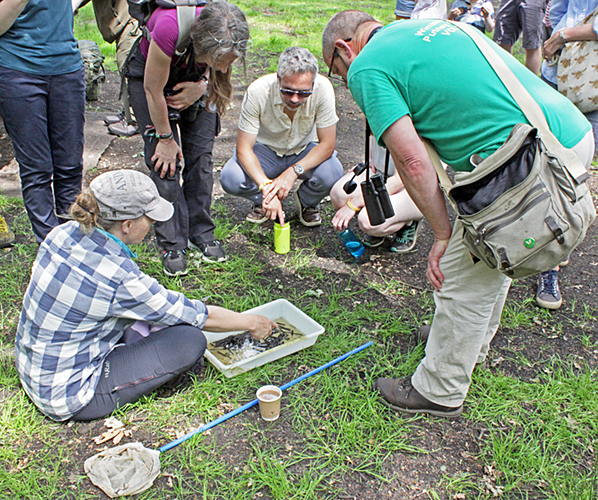 Pond-dipping with Dr Naomi Ewald in Hookhamslade pond
Pond-dipping with Dr Naomi Ewald in Hookhamslade pond
The specimens including water boatmen (Notonecta), flatworms, mosquito larvae, water lice (Asellus aquaticus), freshwater shrimps (Crangonyx and Gammarus), water-fleas (Daphnia), copepods with egg sacs, phantom midge larvae (Chaoborus) and larvae of non-biting midges.
Angela Evans-Hill drove out to meet us at Hookhamslade pond, with fruit juice, coffee, tea and biscuits, as well as pond nets and plastic trays.
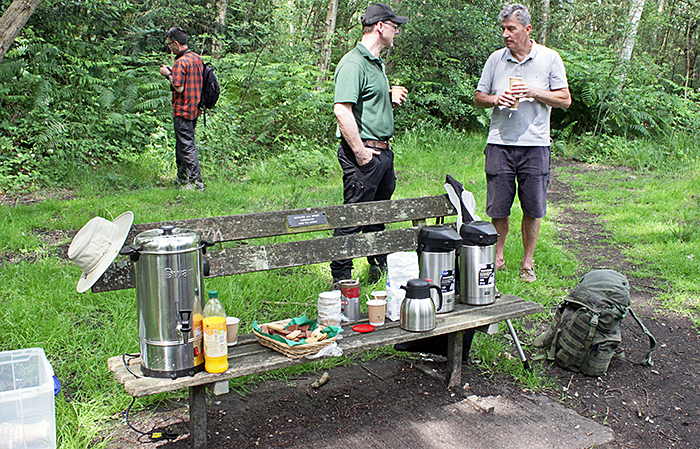 Refreshments
Refreshments
Acknowledgements
We are grateful to the Conservators for allowing us to use the garage for our microscopes and cameras, and to collect specimens from the Common.
Members of the Quekett Microscopical Club will be in the Information Centre for Wimbledon Common Open Day on Sunday 10th September 2023.
Report and photographs by Alan Wood

